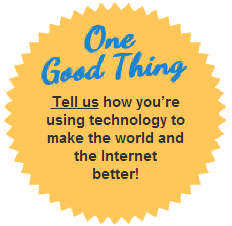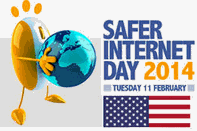Tell us ‘one good thing’ about using tech to make the Internet or the world better
This article first appeared in the San Jose Mercury News
About 11 years ago, the European Commission established Safer Internet Day, an annual event that focuses on making the Internet a better and safer place. It takes place on the second day of the second week of February, which means it falls on Feb. 11 in 2014. Over the years there have been sporadic events in the United States supporting the same goal, but there hasn’t been a lot of coordination in this country.
That’s about to change.
ConnectSafely.org, the nonprofit Internet safety organization that I co-direct, was asked by the European Commission to coordinate Safer Internet Day activities in the United States. With support from Rep. Anna Eshoo, D-Palo Alto, and a variety of government agencies, nonprofit groups and companies, we’re planning an event in Washington, D.C., on Feb. 11, along with local events throughout the country.
This year’s theme is “Let’s create a better Internet together” because the folks in Europe who coordinate events globally realize that improving the online experience for both kids and adults isn’t just about dealing with dangers. It’s also about recognizing and encouraging all of the great ways people use the Internet and mobile technology to make the world a better place.
Here in the United States, we’re doing this by creating a “one good thing” campaign and asking people to go to SaferInternetDay.us to let us know what they are doing or have done. It doesn’t have to be a big thing. It could be as simple as letting us know that you had a conversation about safety at home or school or that you used the Internet to help mobilize people to clean up a local park. It could be a report about something kind you tweeted or how you used your mobile phone’s camera to document a problem that needed to be addressed.
And it doesn’t have to be your good thing — you can tell us about someone else if you want. You can write us a post, send a video or upload a file. If it’s positive, we want to hear about it and share it.
All of the good things will be reported on the site and many will be tweeted or posted to our Facebook page. Selected ones will be featured in a video to be shown at our Capitol Hill event and our YouTube channel.
The reason we’re doing this is because “goodness” can be infectious. We keep hearing about an epidemic of cyberbullying (actually there isn’t one), but we’d much rather be talking about an epidemic of kindness because that’s exactly what is happening right now. Sure, there are some people using the Internet to do mean things, but there are millions of people in the United States and around the world using the Internet and mobile technology to do amazing things to help their communities, schools, nation and the world.
There are plenty of examples of “good things” people are doing. Kevin Curwick, a high school football player from Osseo, Minn., for example, has started a “nice it forward” campaign on Twitter (@OsseoNiceThings), where students just say positive things about other students. The idea, according to Justin Patchin of the Cyberbullying Research Center, is spreading to other cities. “Showing compassion in a public forum sends a message to those who are being targeted that they are not alone and that at least some students at the school are on their side and appreciate who they are and what they do,” Patchin wrote in his blog.
And then there’s Pink Shirt Day in Canada. A ninth-grade boy in Nova Scotia was bullied for wearing a pink shirt to school. When two seniors heard the news, they went to a discount store and bought 50 inexpensive pink T-shirts that dozens of students wore to school. What started out as a kind gesture turned into a movement and “Pink Shirt Day” is now celebrated throughout Canada and beyond.
The project doesn’t have to solve a big problem. It could be as nice as just bringing a smile to people’s faces like CaliforniaChristmasLights.com, which helps bring holiday cheer to people in Silicon Valley.
It can even be a commercial enterprise. Christopher Gandin Le used to work for the National Suicide Prevention Lifeline and now heads up Emotion Technology — a company that focuses on public health and suicide prevention. AbleRoad is a company that connects people with disabilities with accessible places to live. StartSomeGood.com helps social entrepreneurs, change-makers and nonprofits rally their community and raise funds.
I could fill pages with great examples, but I would love to hear more. If you or someone you know is using tech to make the world a better place, send me an email or tell us about it at OneGoodThing.us. We’re especially interested in what young people are doing, but also want to hear about adults who are using their skills and technology to benefit the world.

